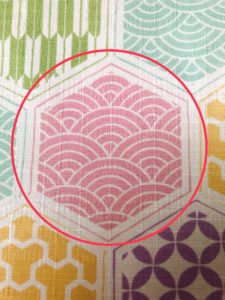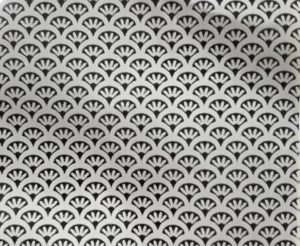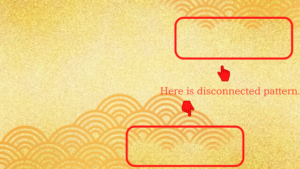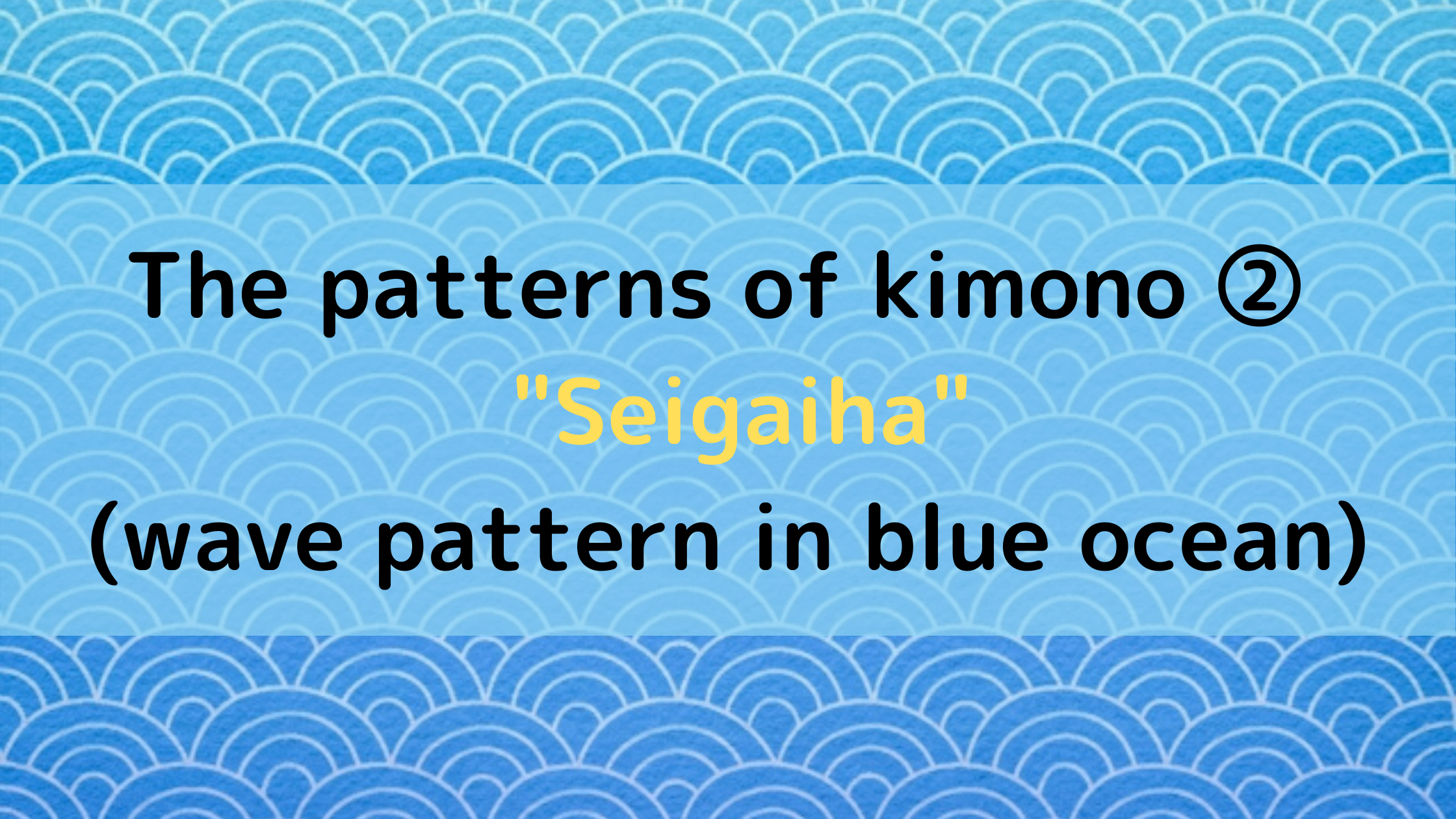Japanese wave pattern called as Seigaiha

Seigaiha is the pattern consisted of fan-like semicircles stacked on top of each other and repeated in a wave-like manner.
If we think of the Wi-Fi symbol, it’s easier to understand.
The pattern represents a “prayer for eternal peace” in an infinite number of gentle waves.
Although there are many theories as to the origin of this pattern, it was originally used in ancient Persia, and the prevailing theory is that they were introduced to Japan via the Silk Road in the Asuka period.
A pattern similar to the “Seigaiha” is also found in Egypt, Turkey, and China.
The design, which is repeated over and over again, represents a prayer for eternal happiness.
It is believed that the name of this pattern comes from the fact that people came to wear this pattern of kimono during the Gagaku (ancient Japanese court music) performance “Seigaiha”.
In the seventh volume of “The Tale of Genji”, written in the Heian period, Hikaru Genji and the head patriarch play depicted dancing Gagaku of “Seigaiwa” elegantly.
Translation : Lieutenant General Genji (Hikaru Genji) danced Seigaiha.The other dancer was the head lieutenant general of the left ministerial family.Even the head lieutenant general, whose appearance and manners are superior to others, I can only say that it is a deep mountain tree next to a flower (cherry blossom) that no one cares about if he is standing with the Genji lieutenant general (Hikaru Genji).
From The Tale of Genji” #7, “Momijiga translated by Sanosugeal.
Variations on “Seigaiha”
・”Hana Seigaiha”(Flower Seigaiha)

→Flowers in the shape of a blue ocean wave.
It is called “Kiku Seigaiha”(Chrysanthemum Blue Wave) if the flower inside is the chrysanthemum, “Matsu Seigaiha”(Pine Blue Wave) if the flower inside is pine, and “Hishi Seigaiha”(Rombs Blue Wave) if the flower inside is diamond-shaped.

・”Yabure Seigaiha”(Disconnected Seigaiha)
→ This is a Seigaiha that is not laid down but has a torn pattern in places.
How was the story of Seigaiha? Knowing the origins of the pattern makes it all the more fun!



Comment